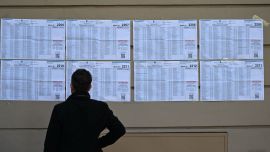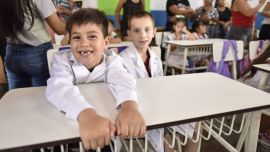With wheat prices skyrocketing due to Russia's invasion of Ukraine, major producer Argentina faces its "worst planting scenario in 12 years" of the crucial grain, a major trade forum said Thursday.
Planting area for the 2022-2023 wheat crop is a lower-than-expected 6.2 million hectares due to drought, which reduced sowing of the crop by farmers, the Rosario Grain Exchange said. That’s 700,000 hectares smaller than the preceding season, which yielded a record harvest of 23 million tons of wheat. Experts believe this year’s harvest will be closer to 18 million tons.
Argentina, one of the world's leading wheat producers, faces "a very complex scenario for the sowing" of the grain due to the impact for a third consecutive year of the La Niña phenomenon, said the report.
Argentina ranked as the world's eighth-largest wheat producer in the 2021-2022 season, according to data from the US Department of Agriculture. According to the UN's Food and Agriculture Organisation (FAO), it was the seventh-largest exporter in 2021, behind Ukraine in sixth place.
Last week, the FAO said wheat prices were up 5.6 percent in May from a month earlier, and were 56.2 percent higher than a year ago.
This was the result of Russia's war on Ukraine as well as an export ban announced by India – the eighth-largest wheat exporter in 2021.
Wheat planting in Argentina began in mid-May this year, although many producers have delayed planting as they await more rainfall.
"In June 2022, the water shortage situation is more severe than in 2020. To find a lower moisture situation you have to go back to June 2009," said the Rosario-based exchange.
As a result, "sowing [wheat] is at a standstill in much of the Pampas region (the largest producer) where planting progress is 17 percent compared to 30 percent last year" on the same date, it explained.
"The possibility of rain in the next fortnight is crucial to finally sow wheat or change crops," the report said.
However, "short-term forecasts indicate the entry of another cold and dry air front that will cause a further drop in temperatures and the development of frost, removing the possibility of rainfall over the Pampas region."
The sowing window ends in the first 10 days of July, although producers who decide to join in at the last minute face greater risks of disease for their crops.
In addition to its predominant position as a wheat producer, Argentina is the world's leading exporter of soybean oil and meal, a crop that is not affected by the drought.
The soybean harvest reached 42.2 million tonnes at the end of the 2021-2022 season on 16.11 million hectares planted with the oilseed, the South American country's star crop.
– TIMES/AFP





















Comments